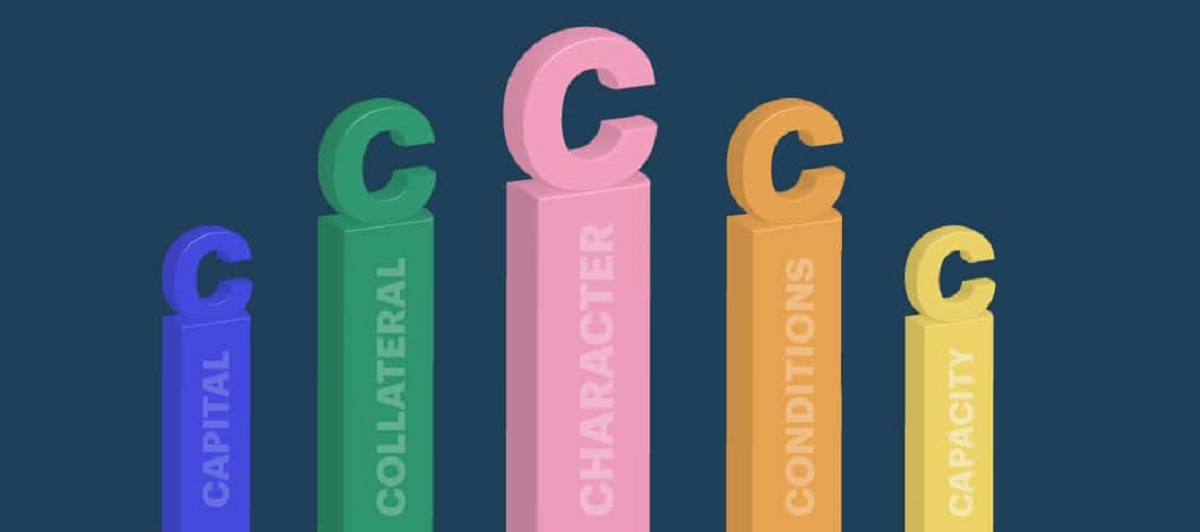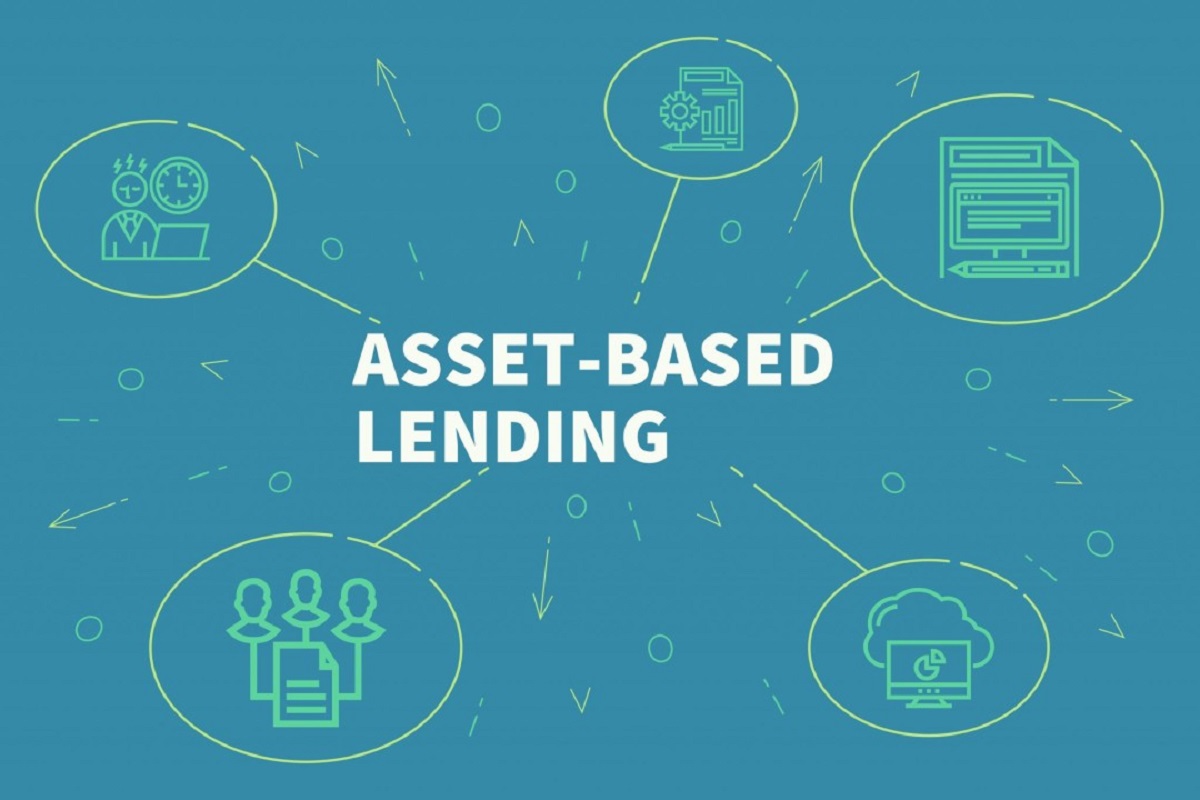Introduction
Welcome to the world of lending capacity! Whether you’re an individual seeking a personal loan or a business owner in need of financing, understanding your lending capacity is crucial. It’s the key that unlocks the potential for you to secure the funds you require for various purposes, such as buying a home, expanding operations, or consolidating debts.
Lending capacity refers to the maximum amount of money a lender is willing to lend to a borrower. It is determined based on several factors, including income, creditworthiness, assets, liabilities, and other financial obligations. By assessing these factors, lenders can evaluate the level of risk involved in lending to an individual or a business.
Knowing your lending capacity is vital for several reasons. Firstly, it helps you make informed decisions about how much money you can borrow for a specific purpose. It also enables you to set realistic expectations and plan your financial goals accordingly. Additionally, understanding your lending capacity helps you navigate the loan application process with confidence, ensuring a smoother and more successful outcome.
In this article, we will explore the essential factors that determine lending capacity, discuss the methods used to calculate it, and provide insights into finding lending capacity for both personal and business loans. By the end, you will have a comprehensive understanding of how lending capacity works and the steps you can take to maximize your borrowing potential.
So, whether you’re an individual looking to finance your dreams or a business owner seeking to unlock growth opportunities, let’s dive into the world of lending capacity and discover the possibilities that await you!
Understanding Lending Capacity
Before we delve into the factors and calculations involved in determining lending capacity, it’s essential to have a clear understanding of what it actually means. Lending capacity is the maximum amount of money that a lender is willing to lend to a borrower, based on an evaluation of their financial circumstances.
It’s important to note that lending capacity may vary from one lender to another, as different financial institutions have their own guidelines and criteria for assessing borrowers. Lenders take into account various factors to determine your lending capacity, such as your income, creditworthiness, assets, liabilities, and other financial obligations.
Your lending capacity extends beyond just the principal loan amount. It also includes other aspects, such as the interest rate, loan term, and any additional fees or charges associated with the loan. These factors can significantly impact the total cost of borrowing and the overall affordability of the loan.
Understanding your lending capacity is crucial for making informed financial decisions. It helps you assess your borrowing ability, set realistic goals, and determine the appropriate loan amount and terms that align with your financial situation. By knowing your limits, you can avoid overextending yourself or taking on excessive debt that may become difficult to manage in the long run.
Moreover, understanding your lending capacity enables you to compare loan offers and negotiate better terms with lenders. It gives you the confidence to advocate for yourself and select the loan option that best suits your needs and financial goals.
It’s important to remember that lending capacity is not fixed and can change over time. Factors such as changes in income, credit score, or financial obligations can affect your borrowing potential. Regularly reassessing your lending capacity can help you make adjustments and take advantage of new opportunities that come your way.
In the following sections, we will explore the various factors that lenders consider when determining your lending capacity. By gaining a deeper understanding of these factors, you’ll be better equipped to navigate the loan application process and maximize your borrowing potential.
Factors that Determine Lending Capacity
When it comes to determining lending capacity, lenders take into account several key factors that provide them with insights into your financial situation and creditworthiness. Understanding these factors will help you grasp how lenders assess your ability to repay a loan and the maximum amount they’re willing to lend. Let’s explore the main factors that influence lending capacity:
- Income: Your income plays a vital role in determining your lending capacity. Lenders assess your income to ensure that you have sufficient funds to meet your loan obligations. They look at your stable income sources such as employment, business profits, or investment returns. A higher income generally indicates a higher lending capacity.
- Creditworthiness: Your creditworthiness is evaluated through your credit history and credit score. Lenders rely on this information to assess your financial responsibility and determine the level of risk associated with lending to you. A good credit history and high credit score can increase your lending capacity, as it demonstrates your ability to manage and repay debts in a timely manner.
- Assets and Liabilities: Lenders consider your assets, such as property, investments, or savings, as they indicate your financial stability and ability to secure the loan. They also assess your liabilities, including existing loans, mortgages, or credit card debt. The value of your assets and the extent of your liabilities impact your lending capacity.
- Debt-to-Income Ratio: Your debt-to-income ratio provides an indication of your ability to handle additional debt. Lenders calculate this ratio by dividing your total monthly debt payments by your monthly gross income. A lower ratio demonstrates a lower level of debt burden and higher lending capacity.
- Other Financial Obligations: Lenders also consider your other financial obligations, such as child support payments, alimony, or ongoing medical expenses. These obligations can impact your lending capacity by reducing the amount of disposable income available to repay the loan.
It’s important to note that these factors are not considered in isolation. Lenders use a holistic approach and evaluate the combination of these factors to determine your overall lending capacity. Each lender may have their own specific criteria and weightage assigned to these factors, so it’s essential to shop around and compare loan options to find the best fit for your financial needs.
By being mindful of these factors and managing them effectively, you can improve your lending capacity and increase your chances of securing the loan amount you require. In the upcoming sections, we will delve deeper into the calculations and assessments involved in determining lending capacity for both personal and business loans.
Calculating Income and Expenses
When it comes to determining lending capacity, assessing your income and expenses is a critical step. Lenders want to ensure that you have sufficient income to cover your expenses and comfortably repay the loan. Let’s take a closer look at how lenders calculate income and expenses:
Income: Lenders consider various sources of income, such as your salary, wages, bonuses, commissions, rental income, or self-employment earnings. They typically evaluate your income based on your average monthly or annual earnings. If you have a stable income, it’s relatively straightforward for lenders to assess your lending capacity. However, if your income is variable or fluctuates, lenders may require additional documentation, such as tax returns or bank statements, to determine your average earnings.
Expenses: Lenders also analyze your monthly expenses to ensure that you have enough disposable income to meet your loan obligations. Your expenses may include housing costs (mortgage or rent payments), utilities, insurance premiums, transportation expenses, groceries, childcare expenses, and any other recurring bills. It’s essential to provide accurate and detailed information about your expenses to help lenders better assess your financial situation.
In addition to your regular expenses, lenders may also factor in potential future loan payments. For example, if you’re applying for a personal loan, the lender will include the estimated monthly loan repayment in your expenses. This loan payment will affect your overall debt-to-income ratio and impact your lending capacity.
It’s crucial to ensure that you provide a complete and accurate picture of your income and expenses when applying for a loan. By doing so, lenders can make an informed assessment of your ability to repay the loan and determine your lending capacity.
It’s worth noting that lenders have different guidelines when it comes to evaluating income and expenses. Some may be more conservative, while others may allow for more flexibility. It’s advisable to speak with multiple lenders and discuss your specific financial circumstances to find the one that offers the best lending capacity based on your income and expenses.
In the next sections, we will explore other factors, such as creditworthiness, debt-to-income ratio, and the assessment of assets and liabilities, that play significant roles in determining lending capacity.
Assessing Creditworthiness
When it comes to determining lending capacity, one crucial factor that lenders evaluate is your creditworthiness. Creditworthiness refers to your ability to repay debts based on your past borrowing history and financial behavior. Lenders assess your creditworthiness to determine the level of risk associated with lending to you, and it heavily influences your lending capacity. Let’s delve deeper into how lenders assess creditworthiness:
Credit History: Lenders review your credit history, which is a record of your past borrowing and repayment activities. They look at factors like the number of open credit accounts, the length of your credit history, and the payment history of your previous and current debts. A positive credit history, with a track record of timely payments, demonstrates your credibility and reliability as a borrower.
Credit Score: Your credit score is a numerical representation of your creditworthiness, based on the information in your credit report. It’s a standardized measure that lenders use to quickly assess your creditworthiness. Credit scores typically range from 300 to 850, with higher scores indicating a lower credit risk. Lenders may have their own credit score thresholds to determine lending capacity, but generally, a higher credit score improves your chances of obtaining a loan and may increase your lending capacity.
Debt History: Lenders also analyze your existing debts to understand your debt management capabilities. They assess the types of debts you have, such as credit card balances, student loans, or mortgages, as well as the amount of debt you owe in relation to your available credit limits. Having a significant amount of debt or multiple outstanding loans may raise concerns about your ability to handle additional debt and impact your lending capacity.
Public Records: Lenders may also consider public records when assessing your creditworthiness. This includes information on bankruptcies, tax liens, judgments, or legal actions against you. Negative information in public records can significantly affect your creditworthiness and may result in a lower lending capacity.
It’s essential to monitor and manage your creditworthiness to ensure a favorable lending capacity. Take steps to maintain a good credit history by making timely bill payments, keeping credit card balances low, and avoiding excessive debt. Regularly reviewing your credit report and addressing any inaccuracies or discrepancies can also help maintain a healthy credit profile.
Keep in mind that lenders may consider other factors alongside your creditworthiness when determining lending capacity. These factors include income, assets, liabilities, and the overall financial stability. By understanding how lenders assess creditworthiness, you can take appropriate steps to improve your credit profile and increase your lending capacity.
In the upcoming sections, we will explore additional factors like debt-to-income ratio and the evaluation of assets and liabilities that play a crucial role in determining your lending capacity.
Examining Debt-to-Income Ratio
In evaluating lending capacity, lenders closely examine the debt-to-income (DTI) ratio, which is a key financial metric that measures the proportion of your income dedicated to debt repayment. Lenders use this ratio to assess your ability to handle additional debt obligations and determine your lending capacity. Let’s take a closer look at the debt-to-income ratio:
Calculating Debt-to-Income Ratio: The DTI ratio is calculated by dividing your total monthly debt payments by your gross monthly income. It is expressed as a percentage. For example, if your total monthly debt payments amount to $2,000 and your monthly income is $6,000, your DTI ratio would be 33% (2000/6000 * 100).
Front-End DTI Ratio: The front-end DTI ratio focuses on the percentage of your income that goes towards housing-related expenses, such as mortgage or rent payments, property taxes, and homeowner insurance. Lenders typically want this ratio to be below a certain threshold to ensure you have sufficient income to cover housing costs and other debts.
Back-End DTI Ratio: The back-end DTI ratio considers your total monthly debt obligations, including housing expenses, credit card payments, student loans, car loans, and other outstanding debts. Lenders look at this ratio to assess your overall debt burden and determine your capacity to take on additional debt.
Interpreting Debt-to-Income Ratio: Lenders typically have specific guidelines regarding acceptable DTI ratios for different loan types. A lower DTI ratio indicates that you have a smaller portion of your income allocated to debt repayment, which is viewed positively by lenders. A higher DTI ratio suggests that a larger portion of your income is already committed to debt, potentially limiting your borrowing capacity.
It’s important to note that lenders may have different DTI ratio thresholds depending on the loan program and the level of risk they are willing to accept. As a borrower, it’s beneficial to have a lower DTI ratio, as it demonstrates your financial stability and ability to handle additional debt responsibly.
To improve your DTI ratio and increase your lending capacity, you have a few options. You can focus on increasing your income, such as through career advancement, additional sources of income, or taking on side gigs. Another approach is to reduce your debt obligations by paying down outstanding loans, consolidating high-interest debts, or adjusting your spending habits to minimize unnecessary expenses.
By understanding and managing your debt-to-income ratio, you can demonstrate to lenders that you have a favorable financial profile and increase your lending capacity.
In the following sections, we will explore other factors, such as the evaluation of assets and liabilities, and the consideration of other financial obligations, that contribute to determining your lending capacity.
Evaluating Assets and Liabilities
When assessing lending capacity, lenders consider your assets and liabilities to gain a comprehensive understanding of your financial stability and ability to secure a loan. Evaluating assets and liabilities provides insights into your net worth and can impact the amount you can borrow. Here’s a closer look at how lenders evaluate assets and liabilities:
Assets: Assets encompass your financial resources and holdings, such as real estate properties, investments, savings accounts, stocks, bonds, and valuable possessions. Lenders take into account the value and liquidity of your assets. Valuable and easily marketable assets contribute positively to your lending capacity as they can act as collateral or demonstrate your ability to repay the loan.
Liabilities: Liabilities refer to your existing debts and financial obligations. This includes mortgages, car loans, student loans, credit card balances, and any other outstanding debts. Lenders assess the total amount of debt you owe and the monthly repayment obligations associated with these liabilities. Higher levels of debt may reduce your lending capacity, as it can signify a higher level of financial risk.
By evaluating your assets and liabilities, lenders gain insights into your overall financial health and stability. It helps them mitigate risk and determine your ability to manage and repay additional debt.
Lenders calculate various ratios based on assets and liabilities to assess your lending capacity. One commonly used ratio is the loan-to-value (LTV) ratio, which measures the loan amount as a percentage of the appraised value of the asset being used as collateral. Lenders typically prefer a lower LTV ratio, as it indicates a lower risk of default.
Moreover, lenders may also consider the liquidation value of your assets. Liquidation value refers to the amount of money that could be quickly obtained by selling your assets in an urgent situation. Assets that have higher liquidation value may positively impact your lending capacity.
It’s important to provide accurate and detailed information about your assets and liabilities when applying for a loan. This will help lenders determine your net worth and make an informed assessment of your lending capacity.
Additionally, having a strong financial foundation with valuable assets and manageable liabilities can increase your lending capacity. If you have significant assets, you may explore options such as using them as collateral to secure a loan or accessing equity to finance your borrowing needs.
In the upcoming section, we will discuss the impact of other financial obligations on your lending capacity.
Consideration of Other Financial Obligations
When determining lending capacity, it’s important to consider not only your existing debts but also other financial obligations that you may have. Lenders take into account these obligations to assess your overall financial responsibilities and ensure that you have sufficient income to meet your loan obligations. Let’s explore the various other financial obligations that lenders consider:
Child Support or Alimony: If you have court-ordered child support or alimony payments, lenders will consider these obligations when evaluating your lending capacity. These financial commitments are deducted from your income, reducing the amount available for loan repayments.
Medical Expenses: Ongoing medical expenses can impact your lending capacity. Lenders may consider your monthly medical bills, health insurance premiums, or prescription costs as part of your financial obligations.
Other Loans: In addition to your existing debts, lenders will also assess any other outstanding loans you have. This includes personal loans, business loans, or any other credit facilities you may be using. These loan repayments will be factored into the calculation of your debt-to-income ratio, impacting your lending capacity.
Other Expenses: Lenders may also take into account other recurring expenses that are not considered traditional debts. This includes expenses such as daycare costs, private school tuition fees, or monthly subscriptions. While not classified as debt, these financial obligations impact your overall cash flow and can affect your borrowing capacity.
Evaluating these other financial obligations allows lenders to gauge your ability to handle additional debt responsibly. They want to ensure that you have enough disposable income after meeting your existing financial commitments to comfortably make loan repayments without overburdening yourself financially.
It’s essential to provide accurate and detailed information about these obligations when applying for a loan. By doing so, lenders can obtain a comprehensive view of your financial situation and make an informed assessment of your lending capacity.
If you have multiple financial obligations, it may be helpful to review and prioritize them. Consider opportunities to adjust your expenses or reduce certain obligations to free up more disposable income. This can improve your lending capacity and increase your chances of securing the loan amount you need.
Remember, lenders want to ensure that you can meet your financial obligations without experiencing undue hardship. By being transparent about your other financial obligations and managing them effectively, you can demonstrate your financial responsibility and enhance your lending capacity.
In the upcoming sections, we will discuss how to find lending capacity for personal loans and business loans, providing insights and guidance specific to each type of loan.
Finding Lending Capacity for Personal Loans
When it comes to personal loans, finding your lending capacity is essential to determine the maximum amount you can borrow and ensure that it aligns with your financial situation. Here are some steps you can take to assess your lending capacity for personal loans:
Evaluate Your Income: Begin by calculating your average monthly or annual income. This includes your salary, wages, bonuses, and any other stable sources of income. Lenders consider your income to determine your ability to repay the loan and set the lending capacity. It’s important to provide accurate documentation, such as pay stubs or bank statements, to support your income assessment.
Analyze Your Expenses: Next, assess your monthly expenses. Include all recurring bills, such as rent or mortgage payments, utilities, insurance premiums, transportation costs, and other necessary living expenses. Deducting the total expenses from your income will give you an idea of your disposable income, which plays a crucial role in determining lending capacity.
Check Your Credit Score: Your credit score significantly influences your lending capacity for personal loans. Request a copy of your credit report and review it for any inaccuracies or discrepancies. Improving your credit score by paying bills on time, reducing outstanding debt, and maintaining a healthy credit utilization ratio can positively impact your lending capacity for personal loans.
Consider Your Debt-to-Income Ratio: Calculate your debt-to-income (DTI) ratio by dividing your total monthly debt payments by your gross monthly income. Lenders typically prefer a DTI ratio of 36% or lower. If your DTI ratio is high, you may need to evaluate your debt obligations and consider strategies to reduce your debt or increase your income to improve your lending capacity.
Assess Collateral or Guarantors: Personal loans can be secured or unsecured. Secured personal loans require collateral, such as a vehicle or property, which can increase your lending capacity. If you have valuable assets that you can use as collateral, it may positively impact your loan amount. Alternatively, having a co-signer with a strong credit history and income may also enhance your lending capacity.
Shop Around and Compare Offers: Different lenders have different criteria and guidelines for personal loans. It’s important to shop around and compare loan offers from various financial institutions. Consider factors such as interest rates, loan terms, fees, and the lender’s reputation. Comparing offers helps you find the one that aligns with your financial goals and offers the maximum lending capacity.
Seek Professional Advice: If you feel overwhelmed or unsure about calculating your lending capacity for personal loans, consider consulting with a financial advisor or loan officer. They can provide personalized guidance based on your financial situation, creditworthiness, and goals, helping you navigate the loan application process and find the best lending capacity suited to your needs.
By following these steps, you can determine your lending capacity for personal loans and make informed decisions about borrowing responsibly. Remember, it’s crucial to borrow only what you can comfortably repay to maintain a healthy financial situation.
In the next section, we will discuss finding lending capacity specifically for business loans, focusing on considerations and methods specific to the needs of businesses.
Finding Lending Capacity for Business Loans
When it comes to business loans, finding your lending capacity is crucial for ensuring adequate financing to support your business’s growth and operations. Here are some steps to help you determine your lending capacity for business loans:
Evaluate Your Business Financials: Begin by analyzing your business’s financial statements, including profit and loss statements, balance sheets, and cash flow statements. Assess your business’s current revenue, expenses, and profitability. Lenders will closely examine your financials to understand the health and viability of your business, which will impact your lending capacity for business loans.
Assess Collateral and Business Assets: Lenders may require collateral for business loans to secure the debt. Evaluate your business assets, such as property, equipment, inventory, or accounts receivable, which can be used as collateral. The value and liquidity of these assets can influence your lending capacity. It’s important to have accurate and up-to-date documentation of your business assets.
Consider Your Business Plan: Lenders often review the business plan to assess the viability and growth potential of your business. A well-prepared business plan demonstrates your understanding of market dynamics, competitive advantages, and growth strategies. It helps lenders gain confidence in your business and may increase your lending capacity.
Review Your Credit History: Your personal and business credit history plays a crucial role in determining your lending capacity for business loans. Request your business credit reports and review them for any inaccuracies or issues that might impact your creditworthiness. Improve your credit score by making timely payments, keeping credit utilization low, and addressing any negative marks on your credit report to enhance your lending capacity.
Calculate Your Debt Service Coverage Ratio (DSCR): The DSCR measures your business’s ability to generate sufficient cash flow to cover loan repayments. Lenders typically look for a DSCR of 1.25 or higher, indicating that your cash flow can adequately service the debt. Calculate your DSCR by dividing your net operating income by your total debt service (loan repayments).
Prepare Financial Projections: Create forward-looking financial projections for your business that reflect the anticipated impact of the loan on your operations. These projections should demonstrate how the loan will contribute to increased revenue, improved cash flow, and overall business growth. Lenders may review these projections to assess your ability to repay the loan and adjust your lending capacity accordingly.
Seek Assistance from Small Business Development Centers: Consider reaching out to local Small Business Development Centers or other resources that provide guidance and assistance to small businesses. These organizations can offer guidance on loan applications, financial analysis, and help you determine your lending capacity based on your specific business needs.
By following these steps, you can evaluate your lending capacity for business loans and present a strong case to lenders. It’s crucial to provide a comprehensive and compelling picture of your business’s financial health, creditworthiness, and growth prospects to secure the maximum lending capacity for your business loan.
Remember to carefully review loan terms, interest rates, and other factors when considering business loan offers. Understanding your lending capacity empowers you to make sound financial decisions that support your business’s long-term success.
In the next section, we will provide a summary of the key points discussed and offer concluding remarks.
Conclusion
Understanding your lending capacity is crucial whether you’re seeking a personal loan to fulfill your personal financial needs or a business loan to support your entrepreneurial ventures. By assessing various factors such as income, creditworthiness, assets, liabilities, and other financial obligations, lenders determine your borrowing potential and the maximum amount they are willing to lend.
Calculating your lending capacity involves evaluating your income and expenses, assessing your creditworthiness, examining your debt-to-income ratio, and considering your assets, liabilities, and other financial obligations. These factors provide lenders with a holistic view of your financial situation and help them assess the level of risk associated with lending to you.
For personal loans, evaluating income, analyzing expenses, checking creditworthiness, and considering collateral or guarantors are essential steps in determining lending capacity. Whereas, for business loans, assessing business financials, reviewing credit history, analyzing collateral and assets, and preparing financial projections play a critical role in finding the lending capacity.
Remember to shop around and compare loan offers from different lenders to find the best lending capacity that aligns with your financial goals. Seeking professional advice and assistance can also provide valuable guidance throughout the loan application process.
Ultimately, borrowing within your lending capacity is crucial to maintain a healthy financial situation and ensure that you can comfortably repay your loans. Be mindful of your financial obligations and carefully consider the terms and conditions of the loan offers you receive.
By understanding and maximizing your lending capacity, you can make informed financial decisions, achieve your personal and business goals, and set yourself up for long-term financial success.

























